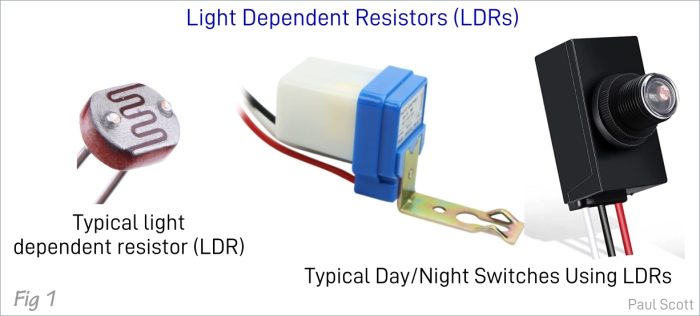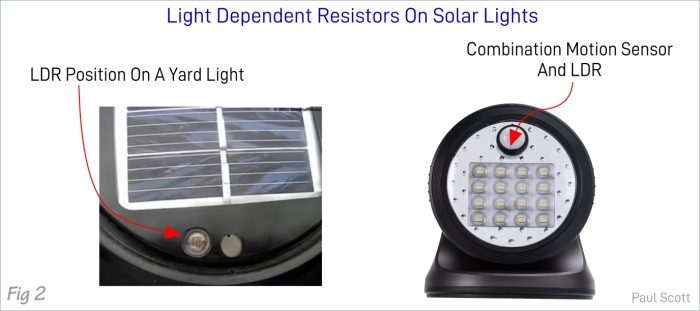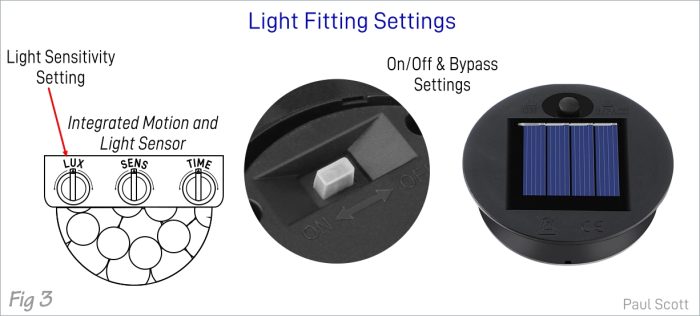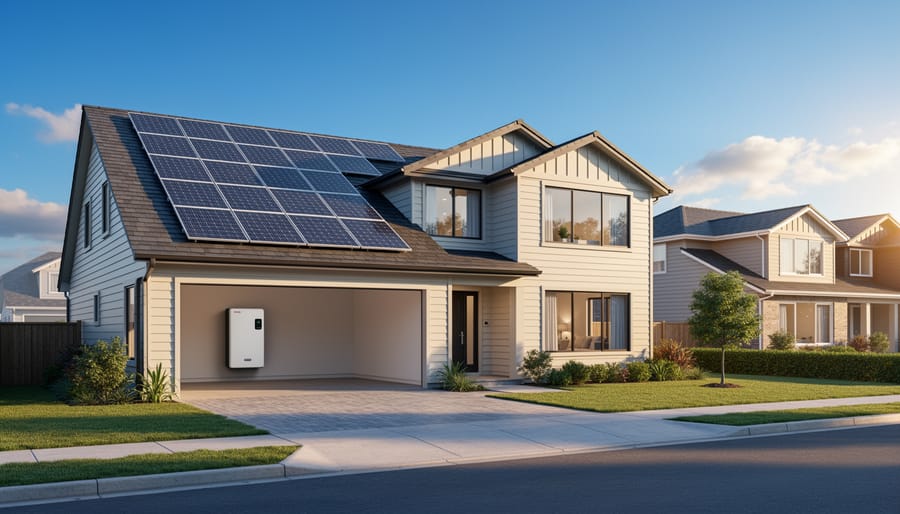Why Do Solar Lights Come on During the Day
Updated:

Stand-alone solar lights should switch on at dusk and off again at dawn. At least that’s what they are supposed to do. Sometimes that doesn’t work out though, and a solar light will come on or stay on during the day.
There’re a couple of reasons this happens, and fortunately, it’s seldom necessary to drop the light in the trash.
Generally, this condition is caused by failures of one or more solar light components. Environmental conditions can also cause them to occur.
Probably the most common cause of these problems is that the solar light doesn’t know its light. A solar light senses ambient light levels using a component known as a Light Dependent Resistor (LDR).
Also known as photocells, they only pass an electric current when light levels reach a certain threshold.
If light sensors or the solar panel get dirty, the solar lights come on during the day or may not come on at all.
Although faulty printed circuit boards (PCBs) may also be the cause, this is a very unlikely scenario. Some solar lights include sensitivity settings, which may also lead to them staying on during the day.
Environmental problems would typically include lights in heavily shaded areas. Shade can fool the light sensor into “thinking” it’s getting dark and then solar lights come on in the day.
How Do Stand-alone Solar Lights Switch on at Night
If you have seen streetlights switch on at nightfall and off again at daybreak, you have the answer. The lowly LDR is most likely the way these lights “know” when to turn on and off.
These usually come in an integrated day/night switch that is mounted on the control box for each bank of streetlights.
A typical light-dependent resistor and day/night switches are illustrated below in Fig. 1.

The same system applies to most solar lights. Only the light does not use such a bulky switching package. Usually, the light only includes the LDR and the internal PCB uses its input to switch the light.
With dedicated security lights, they can integrate the LDR with the light’s thermal or motion sensor.
In these cases, it is usually possible to override either sensor. Then the light can function as a normal solar light or a motion-triggered security light.
Typical positions for the LDR are illustrated in Fig 2. below.

So, Why Does a Solar Light Stay on During the Day?
Let’s look at issues with the light components first.
Component Failures & Settings
The Light Sensor
If the LDR is caked with grime or covered with leaves or other debris, the sensor won’t work. It will read a perpetual state of darkness and keep the light on constantly, even during the day.
Some LDRs are easily identifiable, as illustrated in Fig 2 above.
In some cases though, the LDR may be located under the lights’ glass cover or under the solar panels themselves. In either case, keeping the light’s solar panels clean should prevent it from staying on during the day.
And a dirty solar panel will do the light’s performance no good anyway.
In fact, keeping your solar lights clean should make up a regular part of their maintenance regimen. And it’s really not hard to do. If a thorough cleaning does not work, the light sensor or other parts may have failed and should be replaced. This is usually best done by a professional, particularly if the light is still under warranty.
Bypass Switching
Some solar garden lights include a bypass switch. This allows you to turn the lights on with no input from the light sensor.
If these switches are accidentally turned on, the light will stay on during the day. This, as well as sensitivity settings, are illustrated below in Fig. 3.

Sensitivity Setting
Solar lights that have integrated motion and light sensors often have a light sensitivity setting. If someone has tampered with these settings, it could make the solar lights come on during the day.
Water Contamination
If water gets inside solar lights it can cause short circuits that may keep the lights on all the time. This often happens with outdoor solar lights and is usually easy to fix.
In most cases, opening the light and allowing it to dry naturally will fix things. In serious cases, you may need to dry all the moisture using a soft cloth and Q tips.
If this happens, a spritz of all internal parts with an electronic PCB cleaner is a good idea.
Physical Damage
If the light has been damaged and the sensor is compromised, this normally requires the replacement of parts. In the worst cases, the light must be replaced.
Fortunately, replacement sensors are plentiful. Have a pro do the job though.
Circuit Board Failure
This is probably the most difficult fault to identify. If the solar panel, glass cover, and sensor are clean, a faulty circuit board could be the culprit. Again, this is a job best tackled by a professional.
Environmental Issues
Sometimes, there is nothing wrong with the outdoor lights at all and simple environmental factors are to blame.
Shading
Although it may sound terribly simplistic, excessive shading will keep lights on during the day. Fortunately, some pruning or even moving the light is sure to solve the problem.
Sometimes shading on its own may not be enough to cause a problem. Throw in a cloudy day, however, and the lights come on at noon.
At least you won’t have to fix solar lights, just ensure they get direct sunlight.
Strong Ambient Lighting
On the opposite side of the scale, if lights do not come on at night, excess ambient light may be the cause.
If landscape or house lighting is very bright, one or more solar lights may not come on. This is simply because the LDR is being fooled into thinking it’s still daylight.
Moving the lights or creative placements of planters or garden features can cut out enough ambient light to solve the problem.
The worst-case scenario is that the solar light batteries need to be replaced.
In Conclusion
In short, the LDR is the heart of the day/night operation of your solar yard lights or solar security lights. Fortunately, these little gizmos are usually robust and seldom fail.
If your solar-powered lights are staying on during the day, cleaning them is more often than not enough. Keep the light sensor clear and unobstructed, and the rest is usually gravy.
There’s not much else that will make solar lights turn on during the day, so fault-finding usually involves Windex and a cloth.
We hope you have found this article useful. If you have questions or advice please post them in the comments section below.








